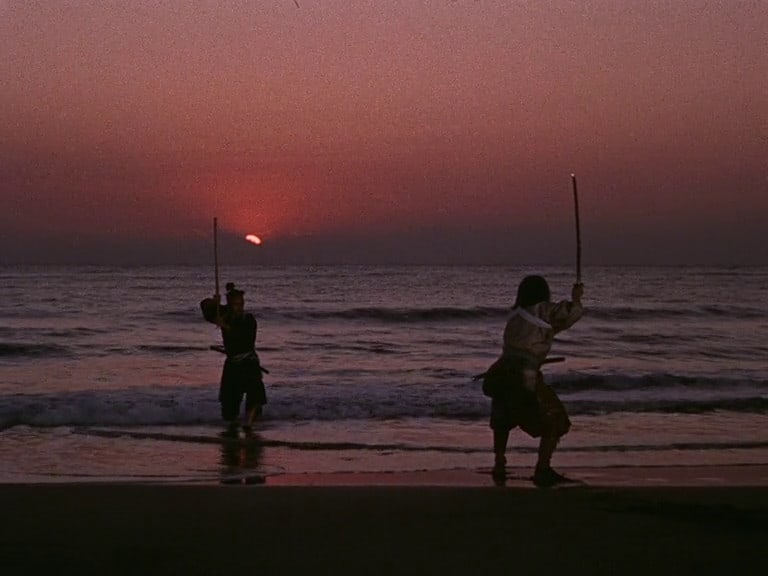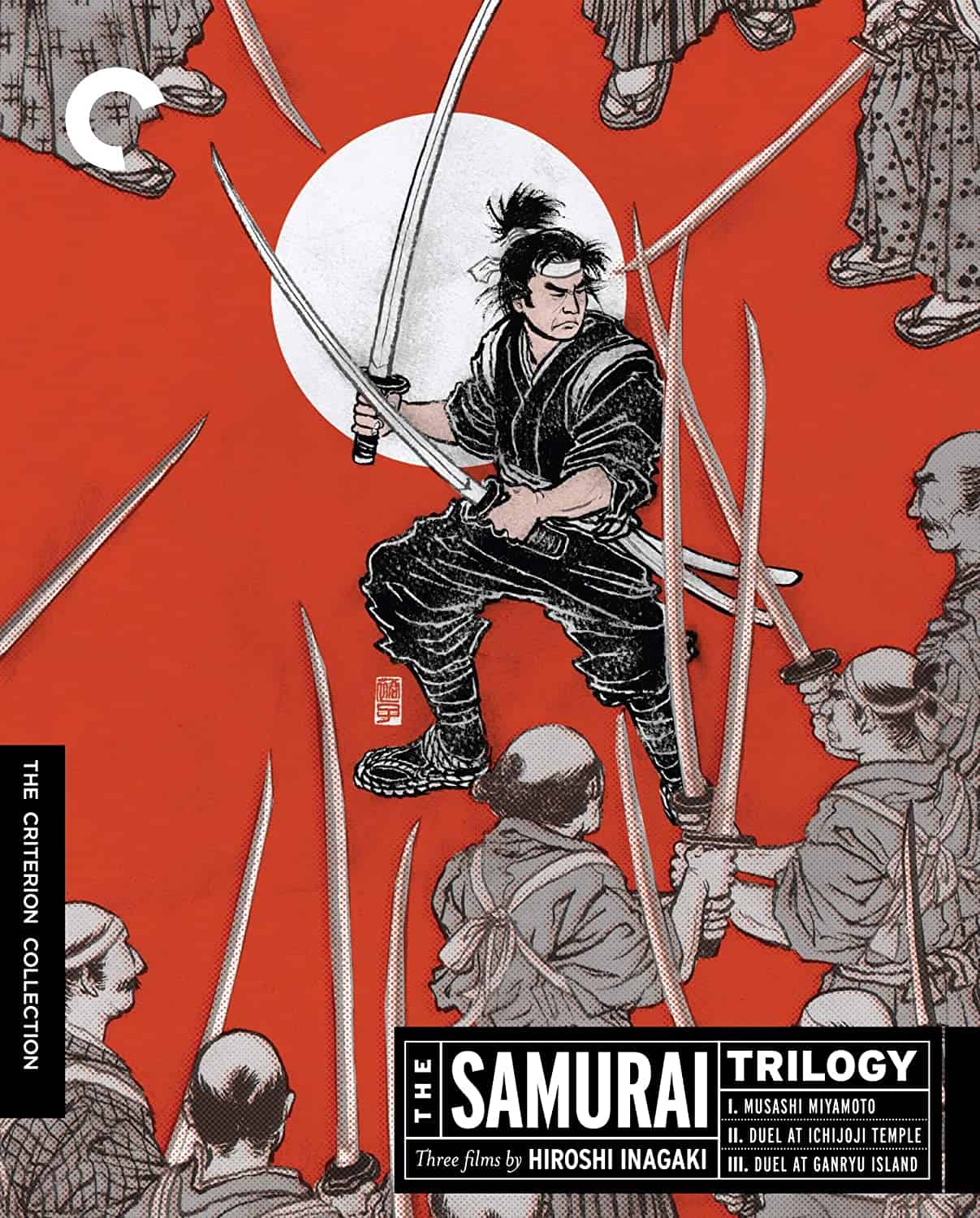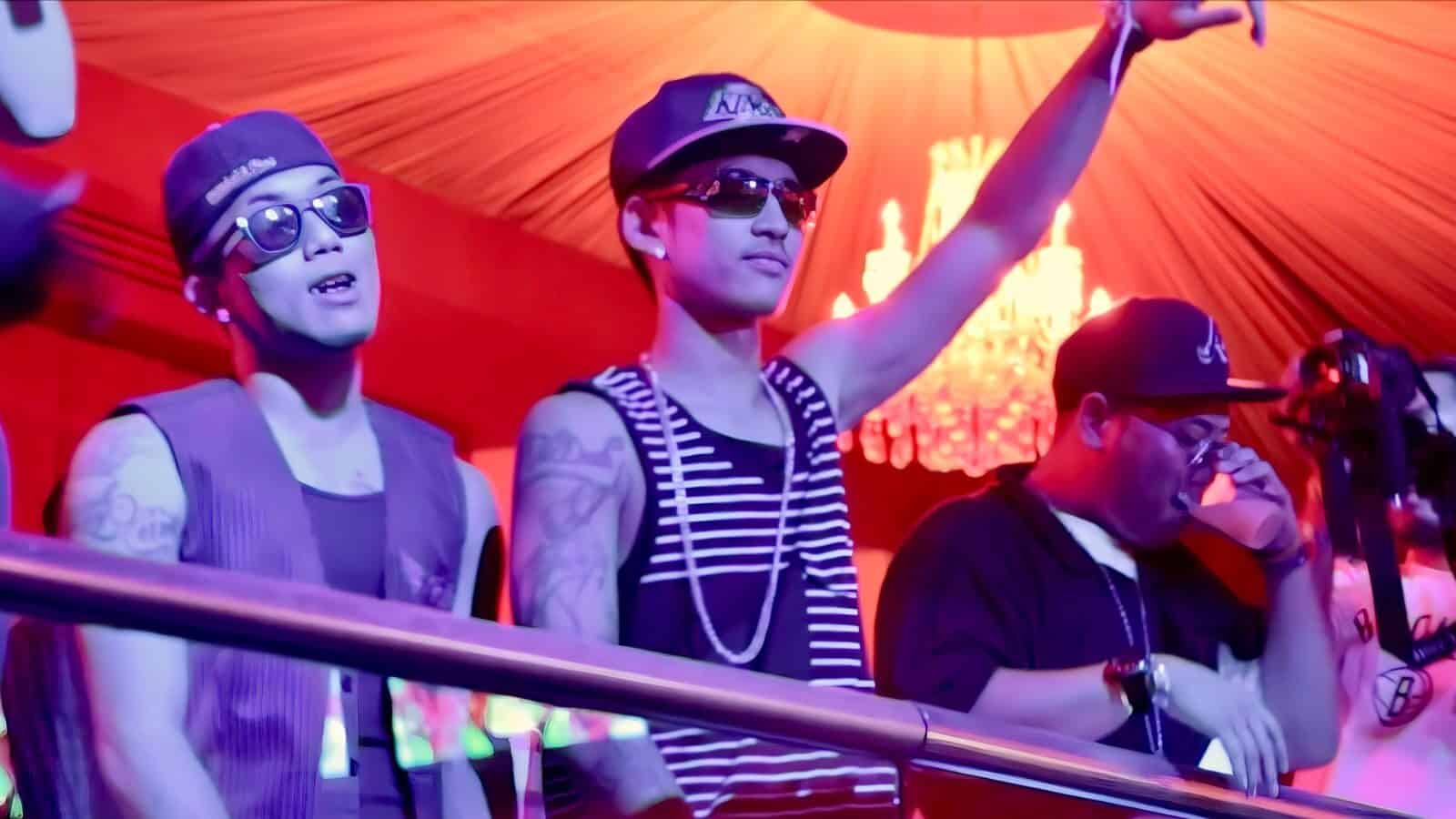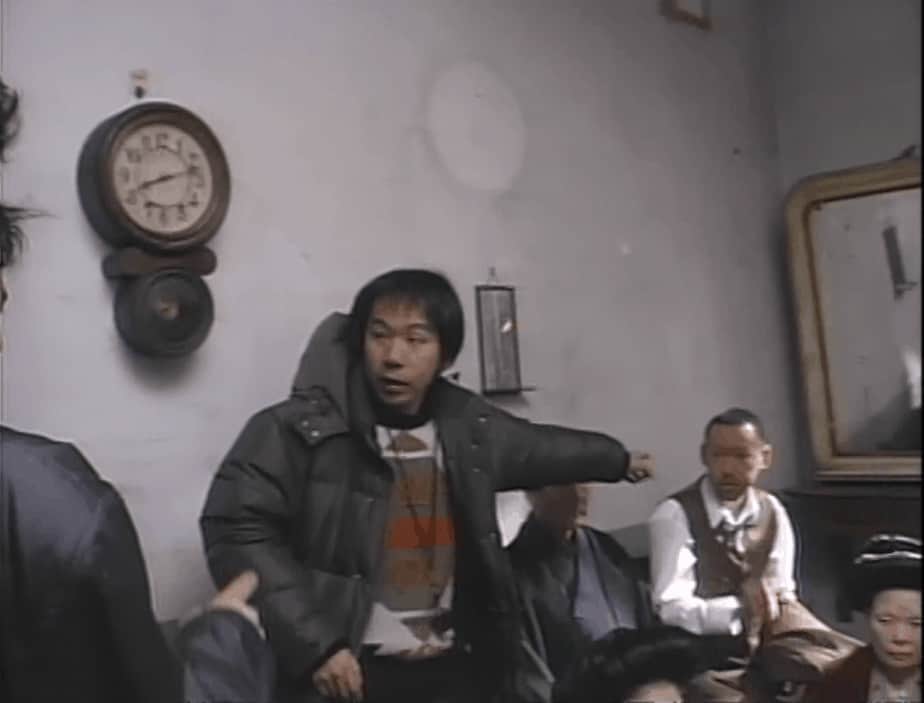“Samurai II: Duel at Ichijoji Temple,” much like the first entry of “The Samurai Trilogy,” was a financial and critical success. A lot transpired storywise, and the ending teased for a great follow-up. It was time for Hiroshi Inagaki to wrap things up for Musashi Miyamoto. More stakes are to be raised, and loose ends are to be tied. Upon release, the third and final entry in Inagaki's rendition of the famous swordsman would perform well like the previous two. Musashi would now face off against his greatest opponent, Sasaki Kojiro, in the enjoyable finale “Samurai III: Duel at Ganryu Island.”
Buy This Title
on Amazon
Following his newfound wisdom and immense regret for his failed awkward romantic advances on Otsu, Musashi Miyamoto retires his sword and pursues the life of a reserved commoner. He has taken in a younger apprentice and grown a liking for woodcutting. However, the world around the samurai continues to seek him out, including the Shogun and those who bear grudges. Otsu makes her attempts to reunite with the man she cares about, all while Akemi also pursues him. On top of that, deadly swordsman Sasaki Kojiro finally meets Musashi and challenges him to a duel. He accepts and will fight him in the following year. Time flies and Sasaki moves up in class, whereas Musashi takes comfort in farming in a small village. The story concludes plot threads established in the trilogy and all leads to a final confrontation between the two warriors on Ganryu Island.
No doubt, this is a suspenseful setup for a finale and one that, for the most part, is engaging. The film takes its time building up to the impending duel and delves into the minds of the hero and villain. Musashi has evolved so much in skill and is at times intimidating, one of the most amusing scenes in the film includes him effortlessly removing flies from his dish of noodles with a pair of chopsticks, which shocks his spectators. Yet, at the end of the day, he is still human and is shown to be emotionally vulnerable. He and Otsu eventually patch up past misunderstandings and finally express their love for each other, yet their lives are forever changed by everything that has transpired, adding a level of tragedy to their romance. Clearly, he no longer takes pleasure in pursuing combat and would rather enjoy a peaceful life and help others, something greatly displayed in his life as a farmer in a small village.

Ultimately, he is forced into once again engaging in confrontation when the innocent are in trouble and when the antagonist will not let him be until they fight. This is a good segway into the feature's main villain: Sasaki Kojiro. His skill with a sword is again emphasized, yet more of his personality is here this time. He is shown to be cunning, intelligent, overly confident, and sometimes even sadistic. He is a man dedicated to the warrior's way but in a very extreme sense. His rise to power in class further intensifies his arrogance, but some of his more human side emerges, especially when he falls in love with a woman. One could say he is the opposite of Musashi, an example of extremist devotion to the Bushido Code. The rivalry between him and the lead hero is superbly done. The two female leads also shine. Otsu is completely broken by this point due to the immense sadness she has endured and even contemplates suicide, to which Musashi thankfully steps in to save her. Akemi also is effectively tragic here, desperately wanting love and at this point, will do whatever it takes to earn the lead's affection, even if it means resorting to extreme measures.
All these story elements are great, but some faults occasionally detract from the core narrative. Some new side characters are introduced; sadly, most are underdeveloped and uninteresting. These dull additions also interrupt the pacing and unnecessarily pad things without any major significance to the main story. An example is Kumagoro, a horse thief who appears tough but is primarily comic relief. This character has been done well in other cinematic depictions of Musashi Miyamoto, such as Tomu Uchida's film series. However, there is not much to him past his introduction scene here. Haruo Tanaka is a talented actor, but his role as the wannabe warrior does not contribute much to the narrative. Some elements from the previous films are also completely dropped here, with some characters who were previously important being tossed aside.
Despite those issues with the story, the acting from the leads definitely compensates. There are some fantastic performances on display here. Toshiro Mifune knocks it out of the park one last time as Musashi Miyamoto, who is a force to be reckoned with, an intelligent thinker, and a vulnerable individual. The same can be said for Kaoru Yachigusa, who nails it one final time as the vulnerable Otsu, and with some of the trilogy's most dramatic and effective scenes here. Mariko Okada also brings a lot to the table as Akemi. Koji Tsuruta completely slips into the role of Kojiro Sasaki, taking the part seriously while also having fun playing this sinister antagonist.
The last entry of “The Samurai Trilogy” delivers on the technical side. The colors, the lighting, the costume design, and the sets are pure eye candy. Jun Yasumoto doesn't return for the camerawork. This time, shooting in luscious Eastmancolor is Kazuo Yamada, whose cinematography here is impressive. Yamada would frequently work with Hiroshi Inagaki on future projects. Like the previous two entries, Ikumi Dan's music score is wonderful.
The last thing to highlight is the phenomenal climax with the duel between Musashi Miyamoto and Sasaki Kojiro. The buildup is excellent, with Musashi easing tension with a calm conversation with a boatman as he rides a boat to Ganryu Island and creates a large custom wooden sword to help balance against Sasaki's long sword. Then, the fight itself is superb with solid choreography, dramatic weight, heart-pounding intensity, and outstanding cinematography. There is also a lot of atmosphere added with Ikumi Dan's music scoring and the morning sun rising as these two samurai cross swords on a beautiful beach.
Despite its flaws, “Samurai III: Duel at Ganryu Island” is a satisfying finale that wraps things up while also delivering a terrific last act. Introducing new characters that end up being underdeveloped, bogs the story down a bit, and it is disappointing to see elements introduced in the previous entries being completely dropped. Yet, a compelling rivalry is established between the protagonist and antagonist, and the lead's journey is effectively concluded. In short, Hiroshi Inagaki's “Samurai Trilogy” is a flawed but solid trio of films. The first movie is the best of the three and works as a stand-alone jidaigeki drama. Despite issues, the two sequels are worth watching and carry on the story with satisfactory results. Beyond their influence, they succeed as entertaining pieces of samurai cinema.
















